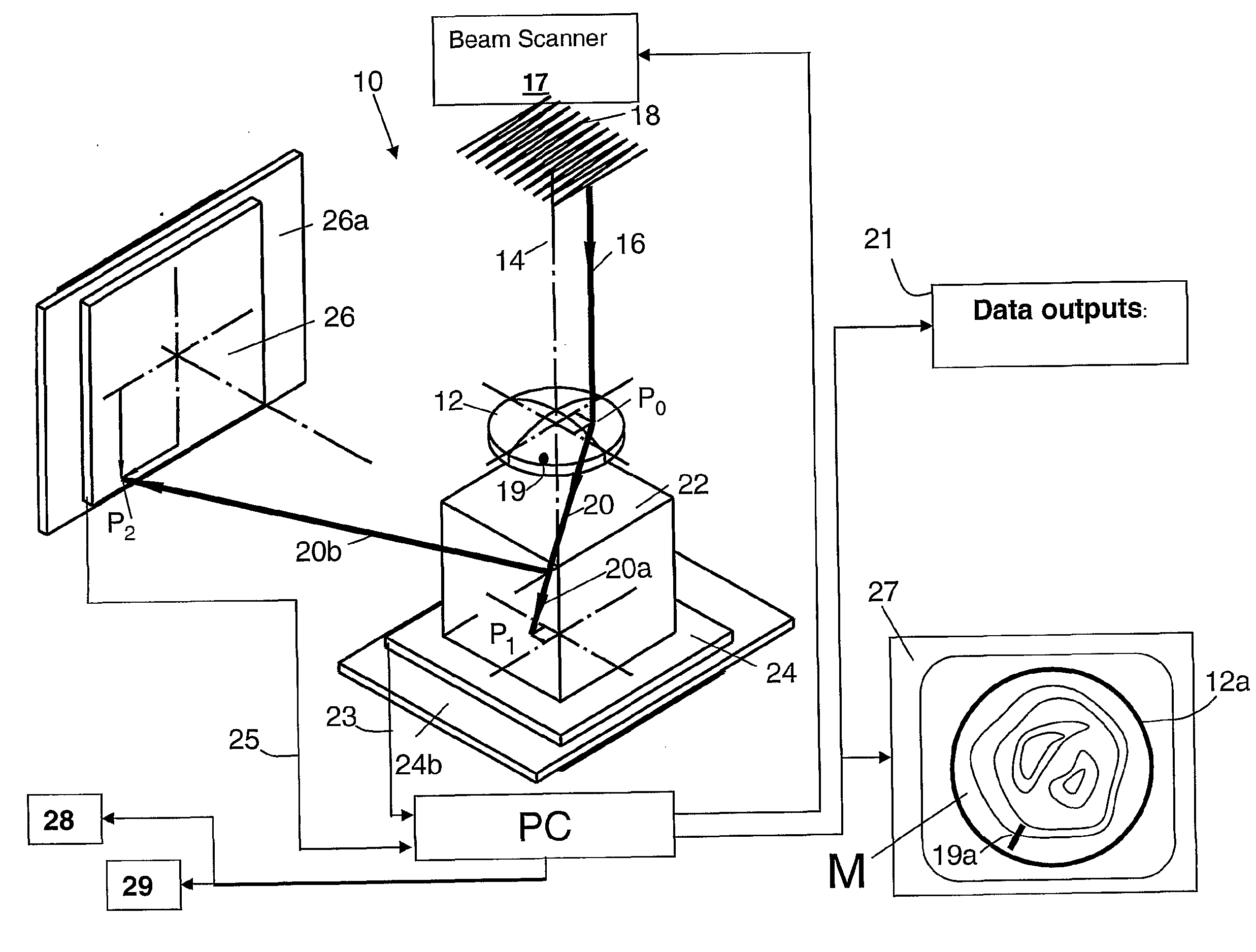Characterization of optical systems
a technology of optical systems and power maps, applied in the field of optical systems, can solve the problems of inability to apply techniques to eyes in vivo, inability to generate useful power maps of contact lenses, and limited number of rays that can be employed
- Summary
- Abstract
- Description
- Claims
- Application Information
AI Technical Summary
Benefits of technology
Problems solved by technology
Method used
Image
Examples
Embodiment Construction
[0032]Having portrayed the nature of the present invention, particular examples will now be described with reference to the accompanying drawings. However, those skilled in the art will appreciate that many variations and modifications can be made to the examples provided without departing from the scope of the invention as outlined above and as claimed below. Also, many other examples are possible within the scope of the invention.
DESCRIPTION OF THE SEVERAL VIEWS OF THE DRAWINGS
[0033]In the accompanying drawings:
[0034]FIG. 1 is a diagrammatic perspective of the optical layout of an instrument or system that forms the first example of the invention in which the optical system being characterized is a lens, the incident beam is parallel to the optical axis of the lens and raster-scanned over the surface of the lens and in which a fixed beam-divider is employed.
[0035]FIG. 2 is a diagrammatic side elevation of a portion of the instrument of FIG. 1 and comprises a first variant of the i...
PUM
 Login to View More
Login to View More Abstract
Description
Claims
Application Information
 Login to View More
Login to View More - R&D
- Intellectual Property
- Life Sciences
- Materials
- Tech Scout
- Unparalleled Data Quality
- Higher Quality Content
- 60% Fewer Hallucinations
Browse by: Latest US Patents, China's latest patents, Technical Efficacy Thesaurus, Application Domain, Technology Topic, Popular Technical Reports.
© 2025 PatSnap. All rights reserved.Legal|Privacy policy|Modern Slavery Act Transparency Statement|Sitemap|About US| Contact US: help@patsnap.com



